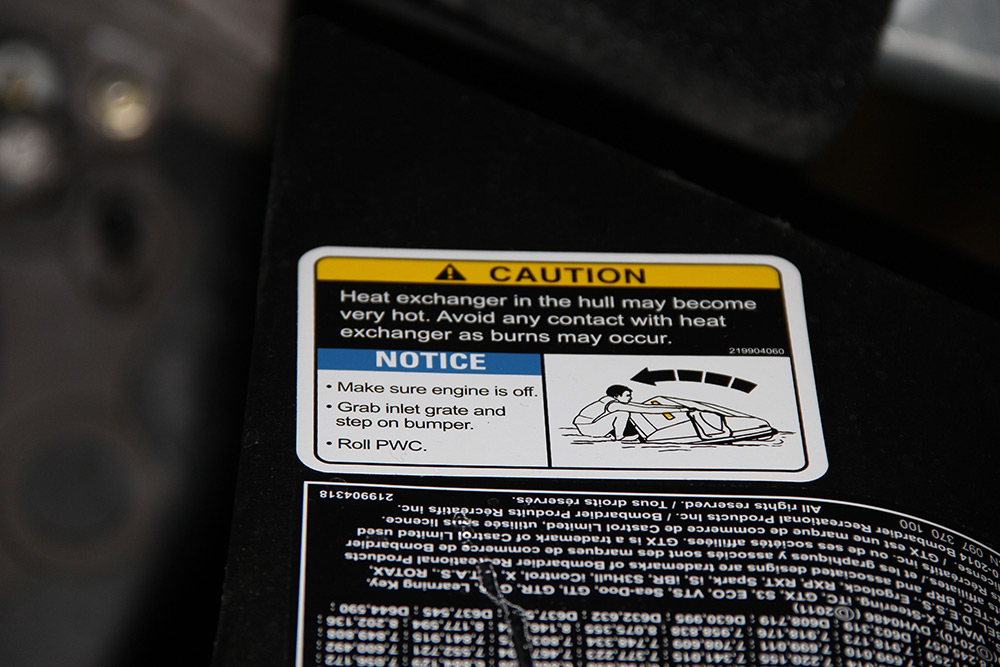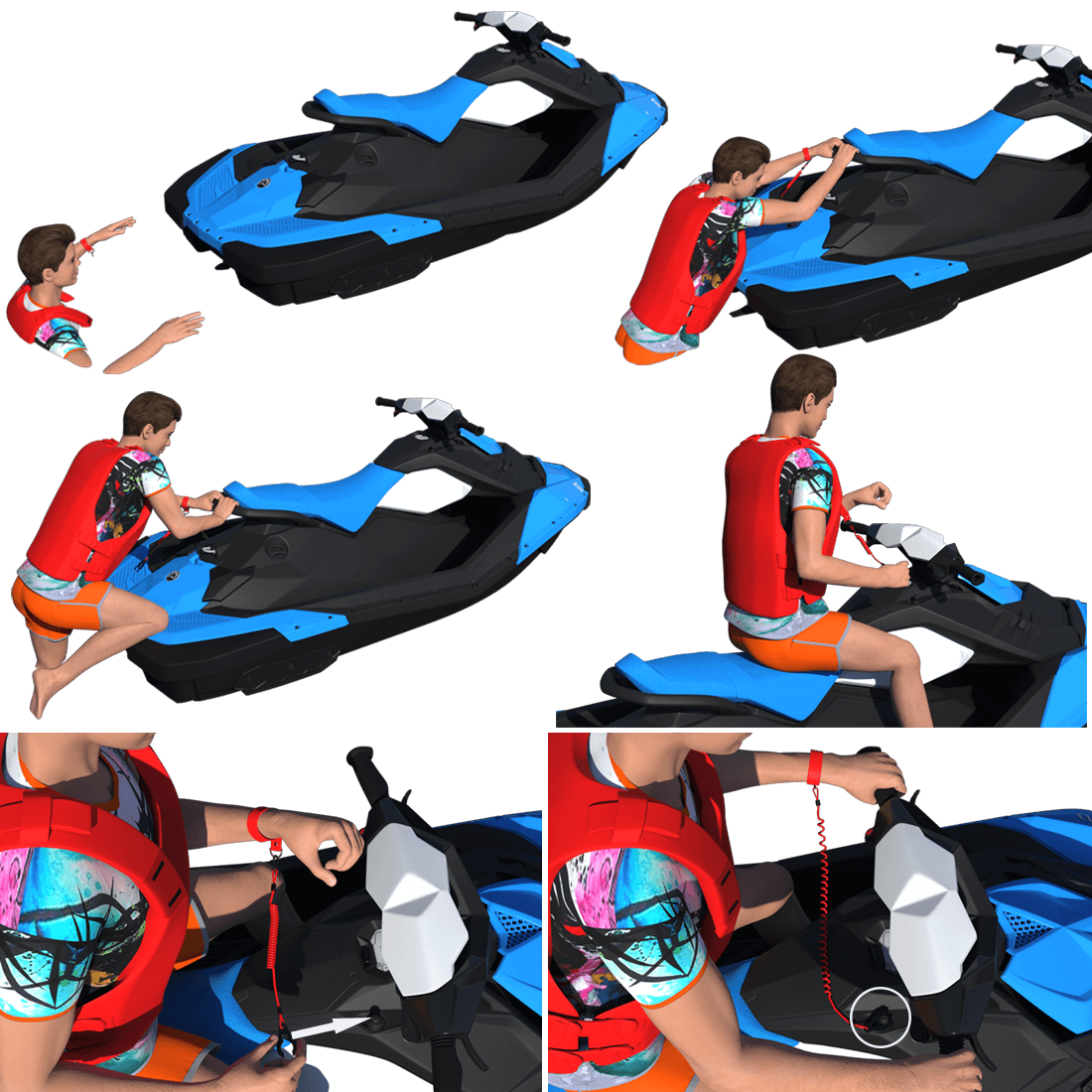PWC - Reboarding - Load Capacity
PWC Stability
The hull of a PWC is somewhat unstable while the craft is at rest in the water. PWCs become more stable as they pick up speed. The force of the water being propelled under the PWC and out the back adds some support to the hull during movement.
Because typical PWCs utilize mechanical steering devices and directional jet nozzles to turn their craft, their center of gravity and pivot point are far forward and this can create an abrupt tail sliding instability problem.
When reboarding a personal watercraft (PWC) after a fall, how should it be rolled?
Should you fall off your PWC don't abandon it. If it has not righted itself, turn it over. Most PWCs carry a label on the hull that indicates the direction that the PWC should be rolled. Be sure to right the PWC in the direction that the label indicates. If yours does not have a label, check your owner's manual.

What is the best way to reboard a PWC?
- Approach the PWC from the stern and pull yourself up onto your knees on the boarding platform.
- From there continue to pull yourself back up on the seat.
- Be sure to attach the kill switch lanyard to the kill switch and to your body or PFD.
- Start up and get back underway.
You should practice reboarding prior to operating the PWC to make sure you are able to do it alone. Remember, a PWC is less stable when idle in the water.

What is the weight limit for a jet ski?
Manufacturer's load capacities differ depending on the size of your PWC. Consult your owner's manual to determine your PWC's load capacity. Do not exceed the manufacturer's recommended load capacities.
A standard personal watercraft (PWC) can safely accommodate a weight range of 500-600 pounds, with 1-3 riders. It is crucial to consider additional weight factors such as fuel, storage, and accessories when determining the overall load. Always prioritize safety by never exceeding the recommended weight limit.

Reserve Fuel Tank
PWCs, like most motorcycles, are equipped with reserve fuel tanks that can be switched to if you run out of fuel. With proper planning, you should never have to use your reserve tank. Always plan your outing according to the 1/3 rule to avoid running out of fuel.
Use 1/3 of your fuel going out, 1/3 coming back and 1/3 in reserve. (Do not count the reserve tank in this 1/3.)